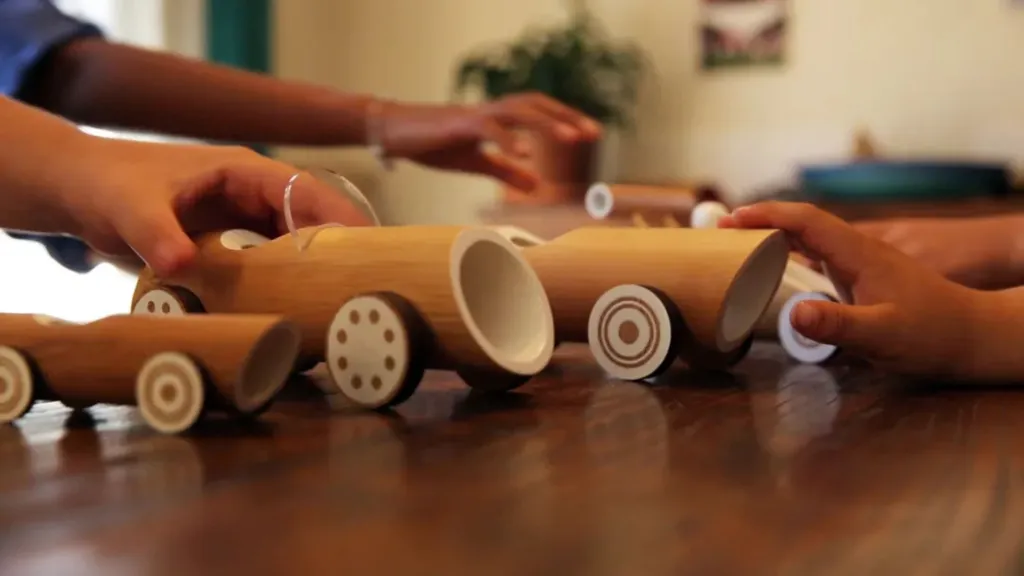Contents
Bamboo, often called “wonder grass,” is a versatile and rapidly renewable resource that holds immense potential for the handicraft industry. Its natural strength and flexibility, especially when processed into thin slivers, make it ideal for crafting a wide range of handmade items. As one of the fastest-growing plants on Earth, bamboo also offers significant environmental benefits, aligning with the growing global emphasis on sustainability. Beyond its role in crafting, bamboo has promising applications as a biofuel, highlighting its overall value as a renewable resource. This dual capability positions bamboo as a unique choice for handicraft manufacturers looking to appeal to environmentally conscious consumers who prioritize sustainability in their purchasing decisions.
The Growing Demand for Sustainable Handicrafts
Consumers worldwide are increasingly on the lookout for products that reflect their commitment to environmental responsibility. This trend is particularly evident in the handicraft sector, where there is a rising demand for items made from sustainable materials. Bamboo serves as a compelling alternative to traditional materials that often have a significant environmental impact. For example, the extensive use of wood in handicrafts can lead to deforestation, while plastic items contribute to pollution and long-term ecological harm. In contrast, bamboo is a renewable material that can help lessen the environmental burden associated with handicraft production. As consumers become more environmentally aware, handicraft manufacturers who embrace sustainable materials like bamboo can gain a competitive edge, appealing to a growing market segment that values both artistry and ecological integrity.
Bamboo: Nature’s Renewable Gift
One of the most appealing aspects of bamboo is its remarkable renewability. Certain species can grow astonishingly fast—up to one meter per day—and reach maturity in just three to five years. This rapid growth makes bamboo a far quicker resource than traditional timber, which can take decades to mature. Additionally, bamboo requires minimal resources to thrive, needing less water and fertilizer compared to other crops. It can grow in various regions, often without extensive human intervention. Bamboo also plays a vital role in carbon sequestration, absorbing significant amounts of carbon dioxide from the atmosphere, sometimes even more than trees. Its extensive root system helps improve soil quality and prevent erosion, contributing to environmental health. Remarkably, bamboo can even thrive on degraded land, offering natural solutions for land restoration. This combination of rapid growth and environmental benefits positions bamboo not just as a sustainable alternative but as an active participant in environmental restoration.
The Versatility of Bamboo in Handicraft Production
Bamboo’s versatility makes it suitable for a wide range of applications in the handicraft industry. Artisans have long used bamboo to create functional and decorative items, from furniture and intricate decorative pieces to practical kitchenware. Traditional bamboo crafts include baskets, mats, and fences, showcasing the material’s workability. In countries like India, bamboo is crafted into boxes, chairs, teapots, lampshades, trays, stools, vases, hand fans, window screens, shopping bags, purses, hats, table mats, and mugs. Likewise, in Taiwan, bamboo finds its way into swings, household goods, musical instruments, furniture, baskets, and hats. Modern applications are equally diverse, with designers exploring bamboo’s potential for contemporary furniture, innovative decor, and sustainable household products. Traditional weaving techniques are still in use, while new methods are emerging to create intricate patterns and forms, especially in furniture design.
Environmental Advantages of Choosing Bamboo for Handicrafts
Choosing bamboo for handicraft production brings numerous environmental benefits. Its rapid growth and ability to regenerate after harvesting without replanting help alleviate pressure on natural forests, contributing to the prevention of deforestation. The efficient use of bamboo in crafting can also minimize material waste, as harvesting bamboo usually does not damage the surrounding environment. Moreover, bamboo thrives in degraded lands with low water and fertilizer needs, promoting soil stability, erosion control, and biodiversity. Compared to traditional materials, bamboo often has a lower environmental impact, producing fewer pollutants during cultivation and processing. Its ability to absorb carbon dioxide makes it an effective ally in combatting climate change, offering a clear advantage over materials with higher carbon footprints. Highlighting these ecological benefits can help handicraft manufacturers effectively communicate the advantages of bamboo to consumers and industry stakeholders alike.
Bamboo Beyond Craft: A Glimpse into Biofuel Potential
In addition to its role in handicrafts, bamboo shows significant promise as a biofuel source. Various conversion methods can transform bamboo biomass into energy, including gasification, pyrolysis, and biochemical conversion. Gasification can convert bamboo into clean gas, while pyrolysis produces liquid fuels that can be refined into biofuels. Biochemical conversion processes can ferment the sugars in bamboo into bioethanol and methane, making it a versatile feedstock for renewable energy. Although this aspect may not be the primary focus for handicraft manufacturers, it underscores bamboo’s overall value and sustainability, enhancing its appeal to eco-conscious businesses and consumers.
Current Trends and Innovations in Sustainable Bamboo Handicrafts
The handicraft industry is experiencing a growing trend toward incorporating bamboo into sustainable design and manufacturing practices. Innovative value chains are connecting artisans with markets for bamboo-based products, promoting economic growth and responsible practices. Traditional weaving techniques are being integrated with modern design principles to create contemporary items that resonate with a broader audience. The increasing availability of a diverse range of sustainable bamboo products—such as kitchenware, personal care items, and home goods—indicates a rising consumer acceptance of bamboo as a high-quality, eco-friendly material. This trend inspires further innovation within the handicraft industry, leading to new applications and designs for bamboo. For example, bamboo matting is being creatively used to produce fans, lampshades, and handbags. The inherent strength and versatility of bamboo are also being explored for structural applications, drawing inspiration from its use in construction and musical instruments. The growing market presence and demand for sustainable bamboo products create an environment ripe for greater innovation in the handicraft sector.
Conclusion
Bamboo is a powerful and versatile renewable resource with significant advantages for the handicraft industry. Its remarkable renewability, rapid growth, minimal resource requirements, and carbon sequestration capabilities make it an exceptionally sustainable alternative to traditional materials. The versatility of bamboo allows for its application in a wide array of handcrafted products, from traditional crafts to contemporary designs. With a growing consumer demand for eco-friendly products, bamboo is an ideal material for businesses to offer unique and appealing items. Its environmental benefits, including reducing deforestation and minimizing waste, further enhance its attractiveness. While bamboo also holds potential as a biofuel source, its primary value lies in enabling the creation of sustainable and desirable handicrafts. By embracing bamboo, handicraft manufacturers can tap into a growing market that values environmental responsibility and contribute to a greener future for the industry.





